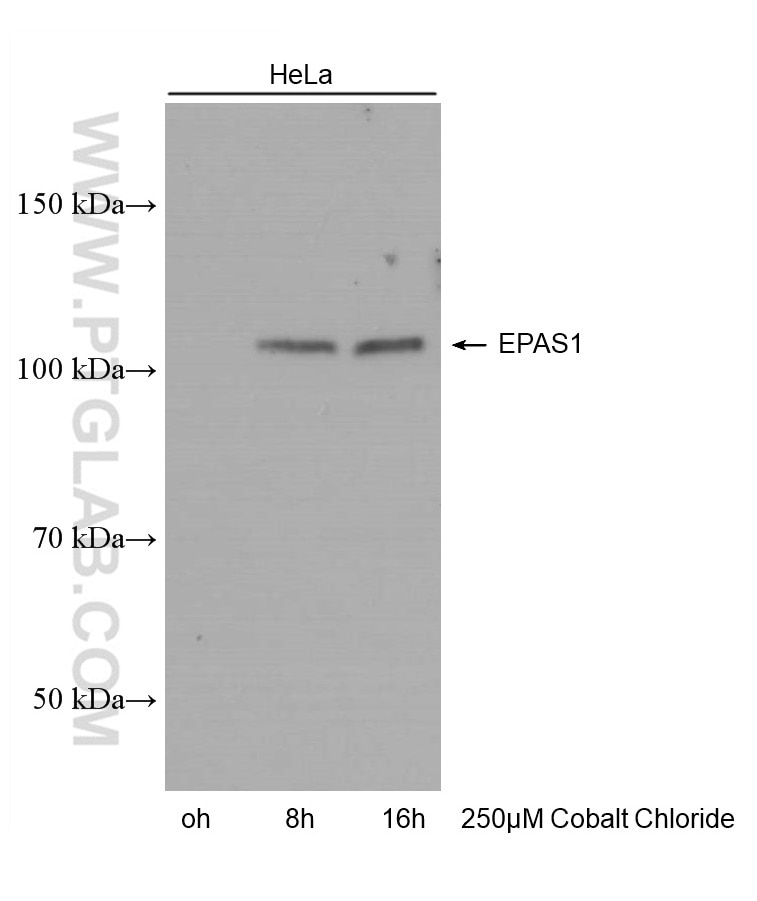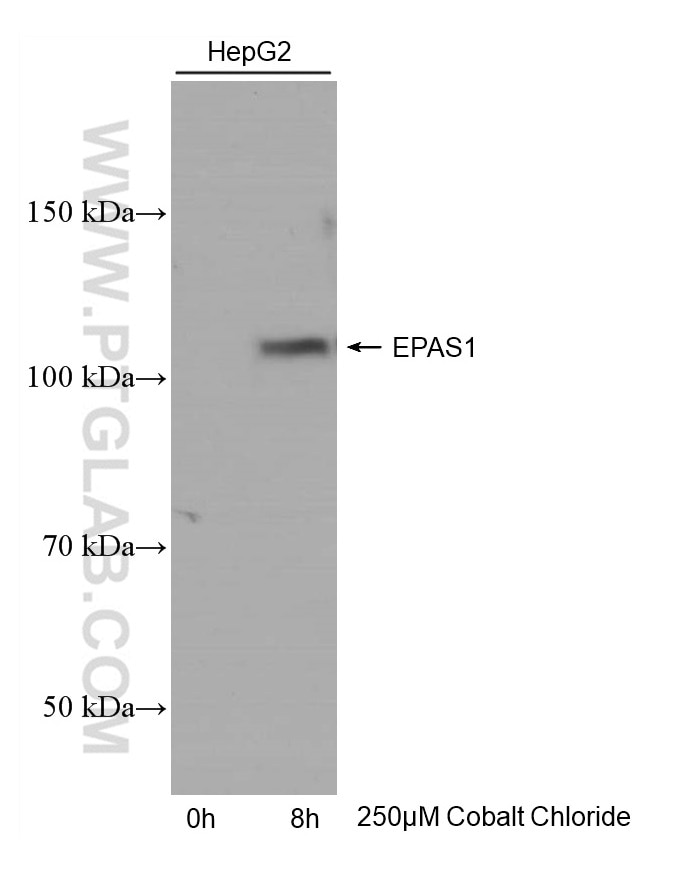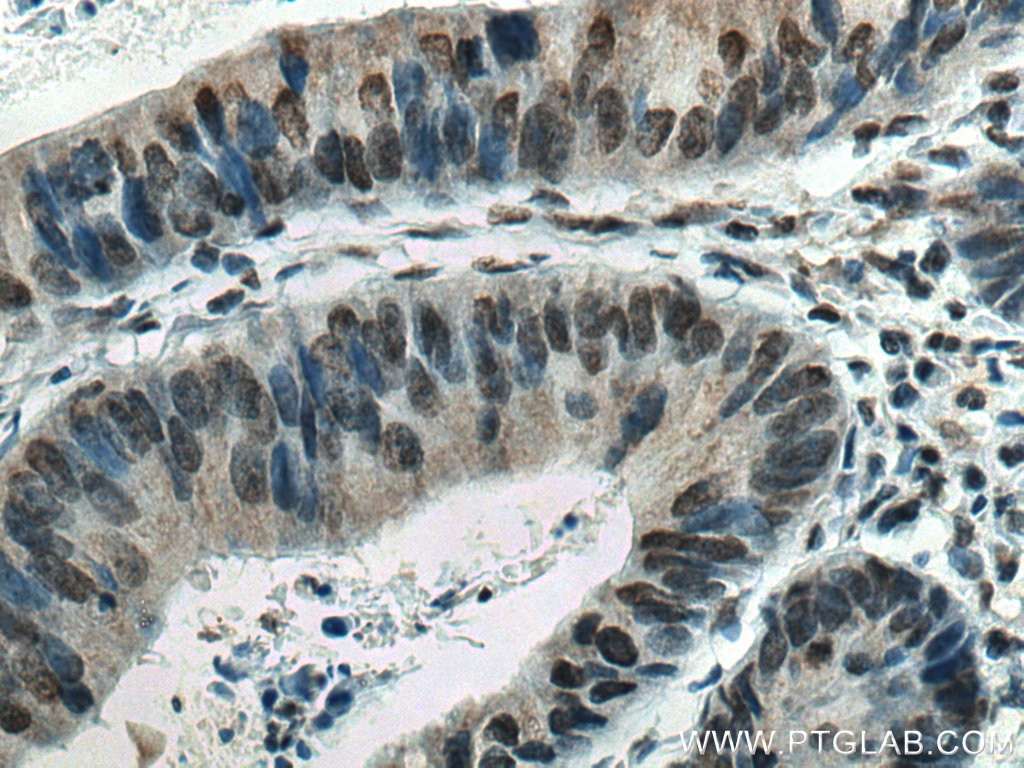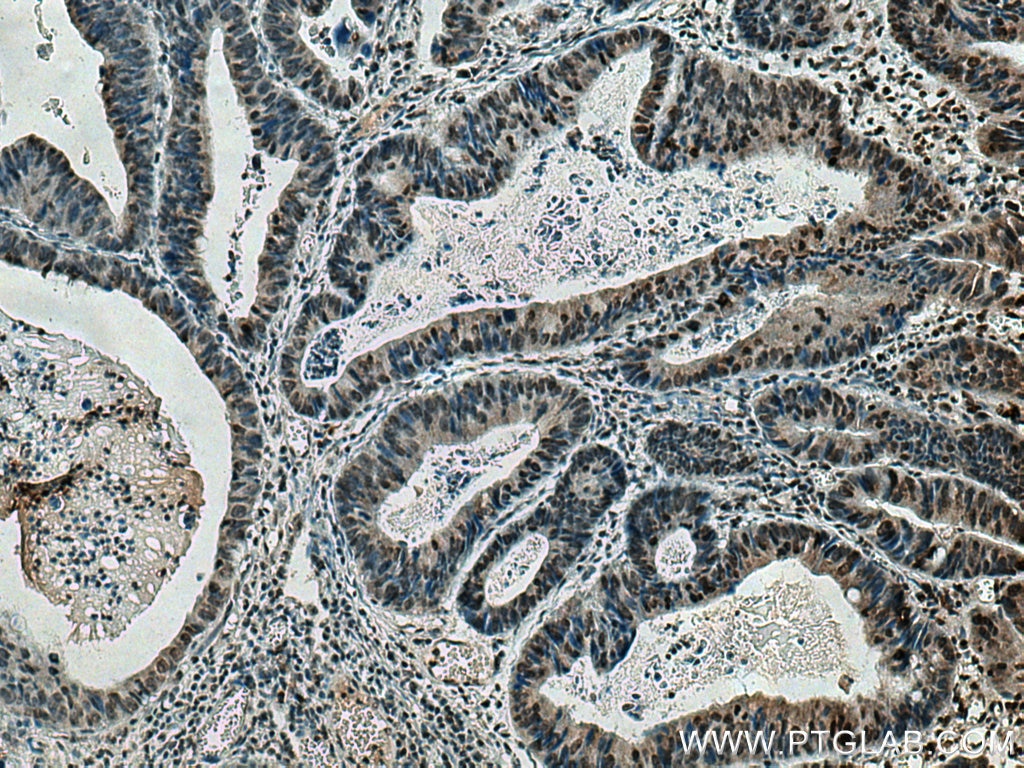Anticorps Monoclonal anti-HIF2α/EPAS1
HIF2α/EPAS1 Monoclonal Antibody for IHC, WB, ELISA
Hôte / Isotype
Mouse / IgG2a
Réactivité testée
Humain et plus (1)
Applications
WB, IHC, IF, ELISA
Conjugaison
Non conjugué
CloneNo.
2F6B12
N° de cat : 66731-1-Ig
Synonymes
Galerie de données de validation
Applications testées
| Résultats positifs en WB | cellules HeLa, cellules HepG2 |
| Résultats positifs en IHC | tissu de cancer du côlon humain, il est suggéré de démasquer l'antigène avec un tampon de TE buffer pH 9.0; (*) À défaut, 'le démasquage de l'antigène peut être 'effectué avec un tampon citrate pH 6,0. |
Dilution recommandée
| Application | Dilution |
|---|---|
| Western Blot (WB) | WB : 1:1000-1:5000 |
| Immunohistochimie (IHC) | IHC : 1:250-1:1000 |
| It is recommended that this reagent should be titrated in each testing system to obtain optimal results. | |
| Sample-dependent, check data in validation data gallery | |
Applications publiées
| KD/KO | See 1 publications below |
| WB | See 3 publications below |
| IF | See 1 publications below |
Informations sur le produit
66731-1-Ig cible HIF2α/EPAS1 dans les applications de WB, IHC, IF, ELISA et montre une réactivité avec des échantillons Humain
| Réactivité | Humain |
| Réactivité citée | bovin, Humain |
| Hôte / Isotype | Mouse / IgG2a |
| Clonalité | Monoclonal |
| Type | Anticorps |
| Immunogène | HIF2α/EPAS1 Protéine recombinante Ag24886 |
| Nom complet | endothelial PAS domain protein 1 |
| Masse moléculaire calculée | 96 kDa |
| Poids moléculaire observé | 120 kDa |
| Numéro d’acquisition GenBank | BC051338 |
| Symbole du gène | EPAS1 |
| Identification du gène (NCBI) | 2034 |
| Conjugaison | Non conjugué |
| Forme | Liquide |
| Méthode de purification | Purification par protéine A |
| Tampon de stockage | PBS avec azoture de sodium à 0,02 % et glycérol à 50 % pH 7,3 |
| Conditions de stockage | Stocker à -20°C. Stable pendant un an après l'expédition. L'aliquotage n'est pas nécessaire pour le stockage à -20oC Les 20ul contiennent 0,1% de BSA. |
Informations générales
Endothelial PAS domain-containing protein 1 (EPAS1), also known as Hypoxia-inducible factor 2-alpha (HIF2-alpha,HIF2A), is a transcription factor involved in the induction of oxygen regulated genes. Binds to core DNA sequence 5'-[AG]CGTG-3' within the hypoxia response element (HRE) of target gene promoters. Regulates the vascular endothelial growth factor (VEGF) expression and seems to be implicated in the development of blood vessels and the tubular system of lung. May also play a role in the formation of the endothelium that gives rise to the blood brain barrier. Potent activator of the Tie-2 tyrosine kinase expression. Activation seems to require recruitment of transcriptional coactivators such as CREBPB and probably EP300. Interaction with redox regulatory protein APEX seems to activate CTAD. EPAS1 is expressed in most tissues, with highest levels in placenta, lung and heart. Selectively expressed in endothelial cells.
Protocole
| Product Specific Protocols | |
|---|---|
| WB protocol for HIF2α/EPAS1 antibody 66731-1-Ig | Download protocol |
| IHC protocol for HIF2α/EPAS1 antibody 66731-1-Ig | Download protocol |
| Standard Protocols | |
|---|---|
| Click here to view our Standard Protocols |
Publications
| Species | Application | Title |
|---|---|---|
Nat Commun Extravillous trophoblast cell lineage development is associated with active remodeling of the chromatin landscape
| ||
Cell Mol Gastroenterol Hepatol A Mitochondrial DNA Variant Elevates the Risk of Gallstone Disease by Altering Mitochondrial Function. | ||
Front Vet Sci miRNA-150_R-1 mediates the HIF-1/ErbB signaling pathway to regulate the adhesion of endometrial epithelial cells in cows experiencing retained placenta |
Avis
The reviews below have been submitted by verified Proteintech customers who received an incentive forproviding their feedback.
FH Balawant (Verified Customer) (12-25-2023) | I have used this antibody. this antibody is working great and have no bacground.
|
FH lUNFENG (Verified Customer) (01-27-2020) | IT IS NOT VERY GOOD.
|
FH Jie (Verified Customer) (01-27-2020) | Positive signal in heart samples, however, does not appear to be decreased in our KO mice model.
|





